I'm using a piezoelectric speaker as an shock sensor. I made a simple non-inverting amplifier using the MCP6021 op-amp as shown in the circuit below. I'm only interesting in the positive output of the speaker so I put a diode to protect the op-amp's input from the negative spikes.
The circuit works as expected when the the oscilloscope's probe is connected to the input (either before or after the diode). When I disconnect the probe from the input, the output of the op-amp seems the become unstable. Sometimes it oscillates at different voltage levels and sometimes it saturates at the positive rail.
What could cause this behavior?

